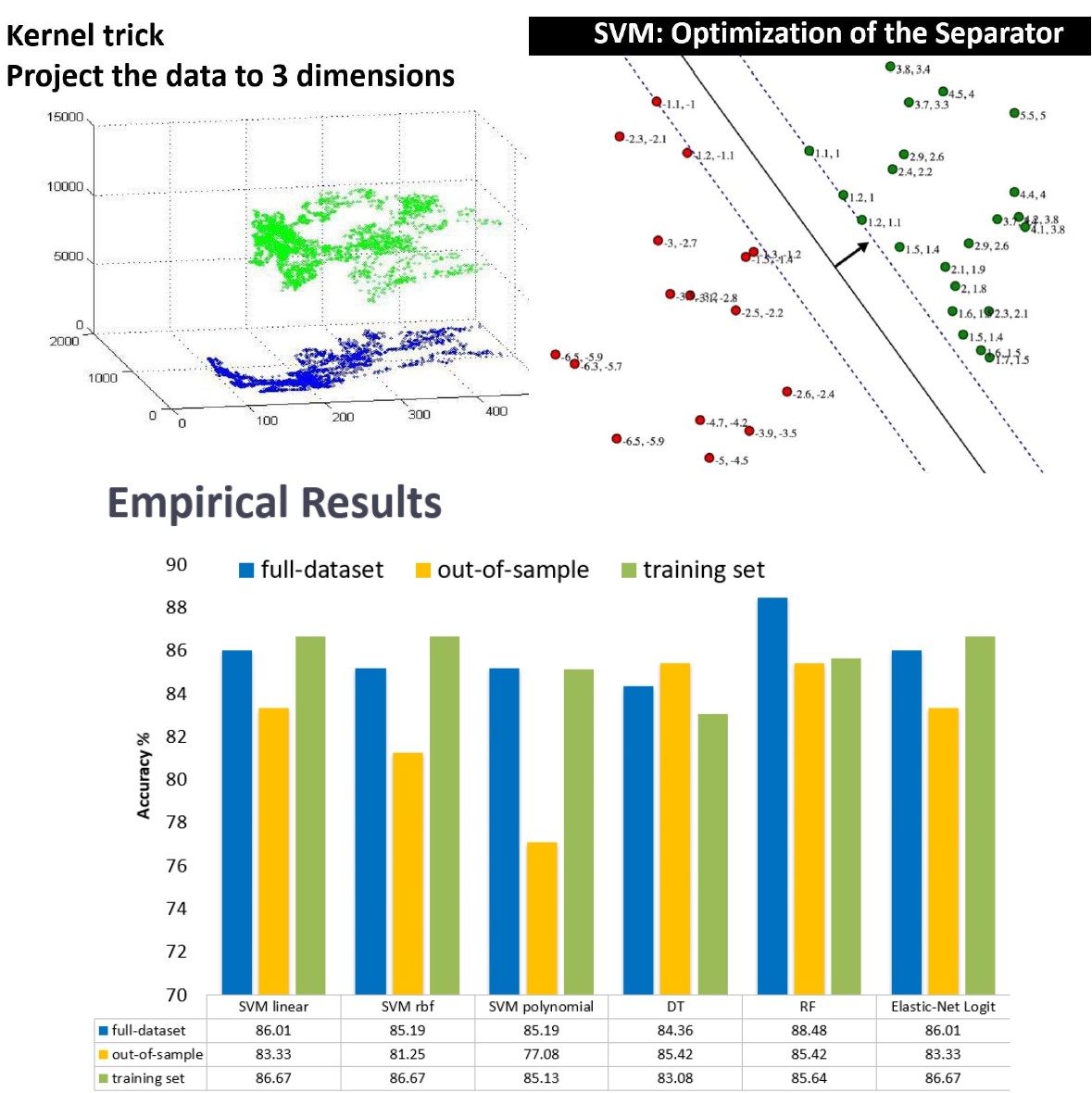General description: Machine Learning (ML) applied to economics can be traced back as early as in Lee & Lee (1974), although as a mere mention in the abstract. The first paper actually applying an ML methodology exclusively on an economics problem is Wang et al. (1984). Since then, ML is widely used in finance as the abundance of such data was necessary for early implementations of ML algorithms. Nonetheless, recent ML architectures allow the use of short data sets, allowing the use of ML algorithms in Macroeconomics problems where data are inherently short. Currently, new methodologies merge and combine econometrics with ML (i.e. GARCH–SVM) and ML techniques and empirical procedures (cross validation) are now adopted to traditional econometrics methodologies (Elastic Net, Lasso, Ridge Regression).
Empirical model: In this empirical work, we employ several ML methodologies: Support Vector Machines (SVM), Decision Trees (DT), Random Forests (RF) and an Elastic Net Logit model used as a benchmark. These are used to forecast a) the EU-area unemployment rate and b) the deviations of output (the Industrial Production Index) from the long-run trend using the information provided by the EU yield curve.
Innovations: We focus our study in the euro area as a whole. To the best of our knowledge, no previous study directionally forecasts the euro area unemployment rate as a whole. Additionally, no other study employs ML to forecast EU output deviations from the long run trend.
Results: For the unemployment rate the best accuracy was achieved with a random forest model: 88.48% on the full-dataset and 85.42% on the out-of-sample part of the dataset. For the output gap, the best accuracy is achieved with an SVM model coupled with the polynomial kernel reaching an out-of-sample accuracy of 100% and an in-sample accuracy of 81.8%.
Policy Implications: We achieve a high forecasting accuracy using ML algorithms. This can be used as an early warning system for policy makers in the designing and implementation of timely intervention policies.
Zoom link: https://zoom.us/j/98193710479?pwd=V1hhZmNtRjlxaUNTdGFvRHArbi9idz09







